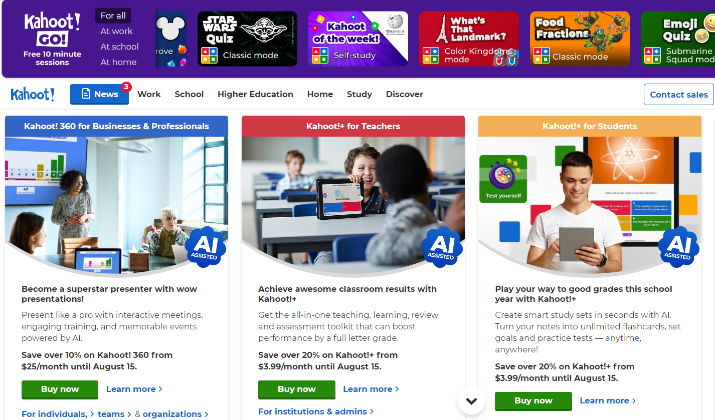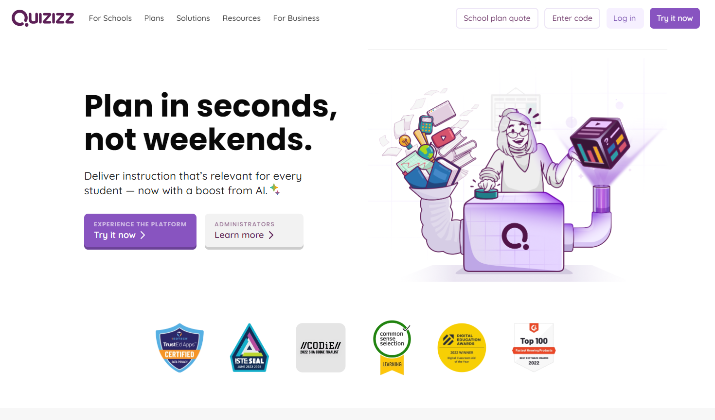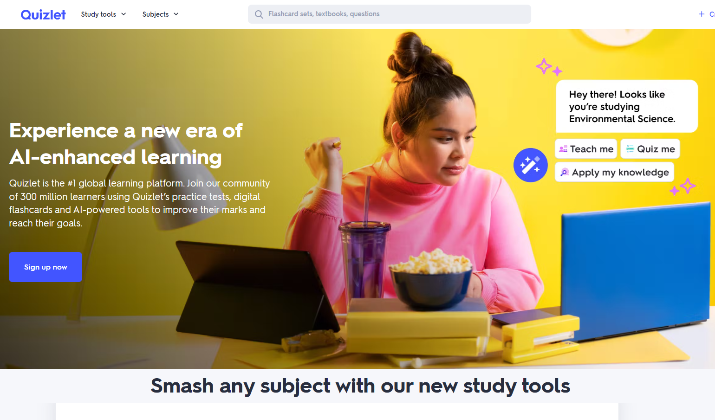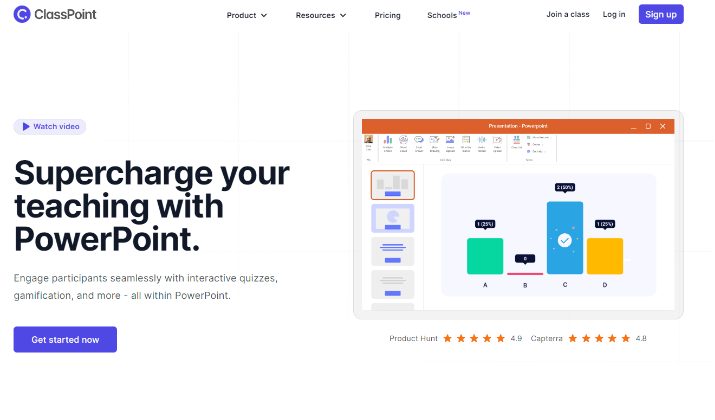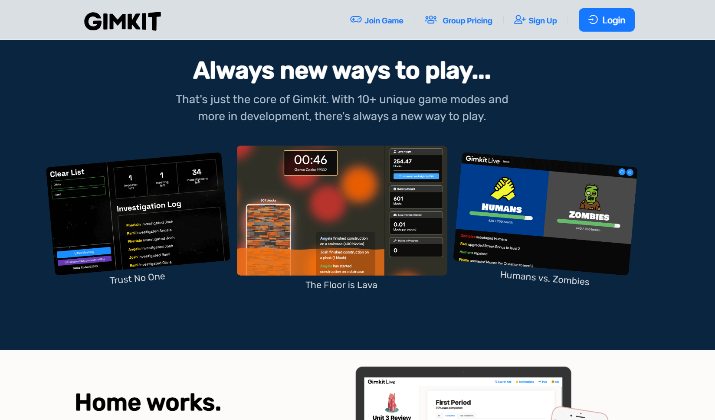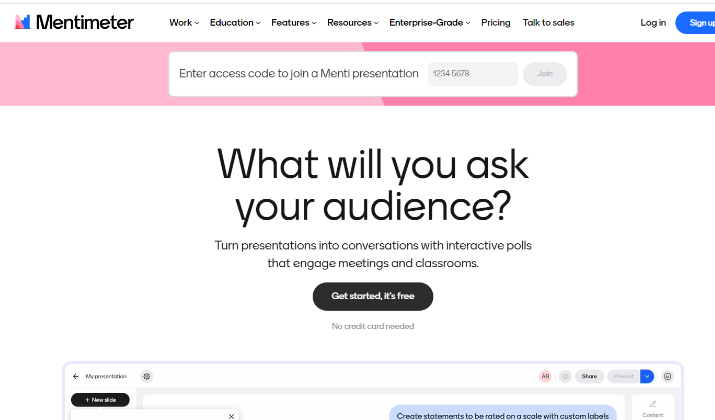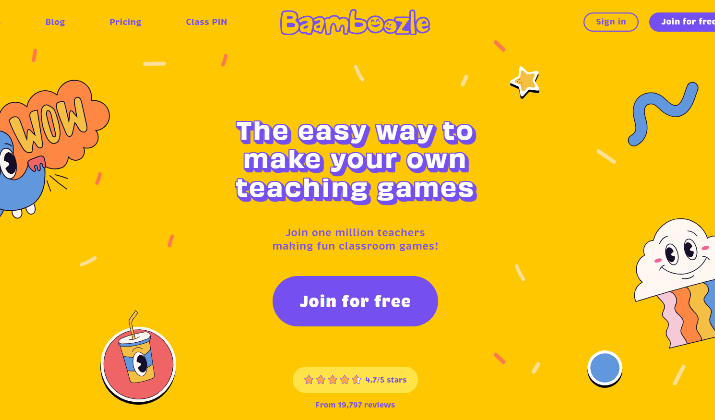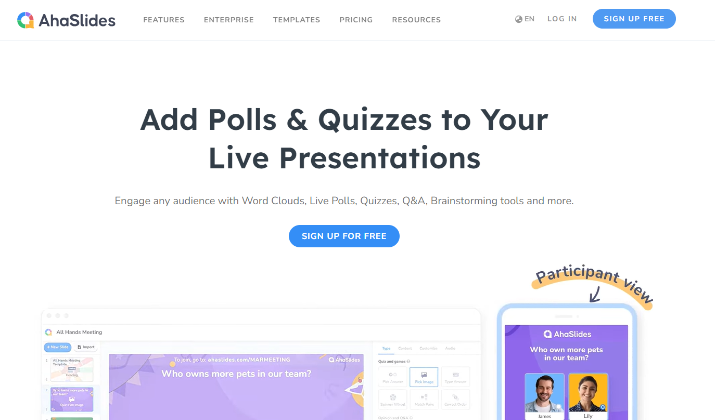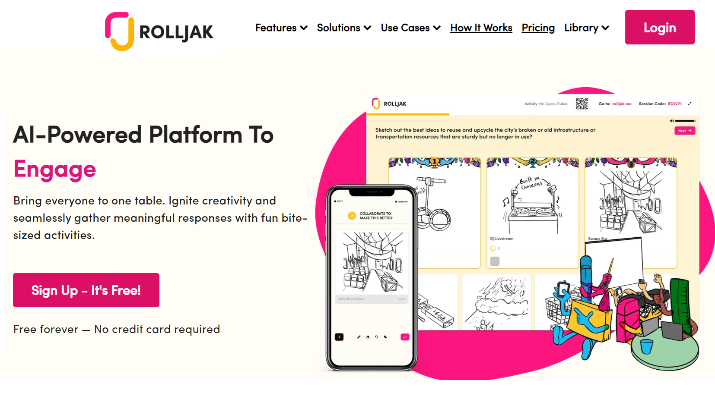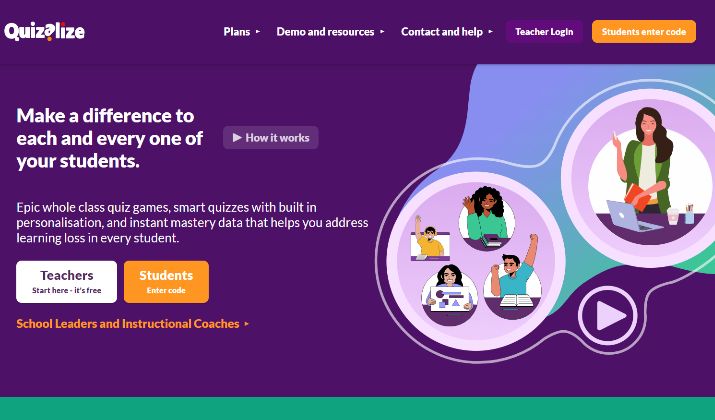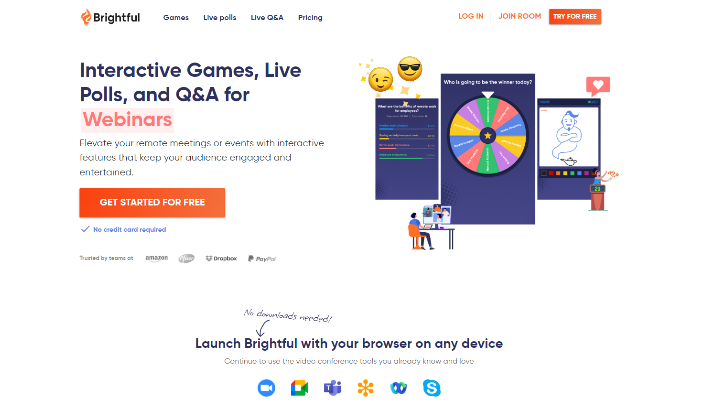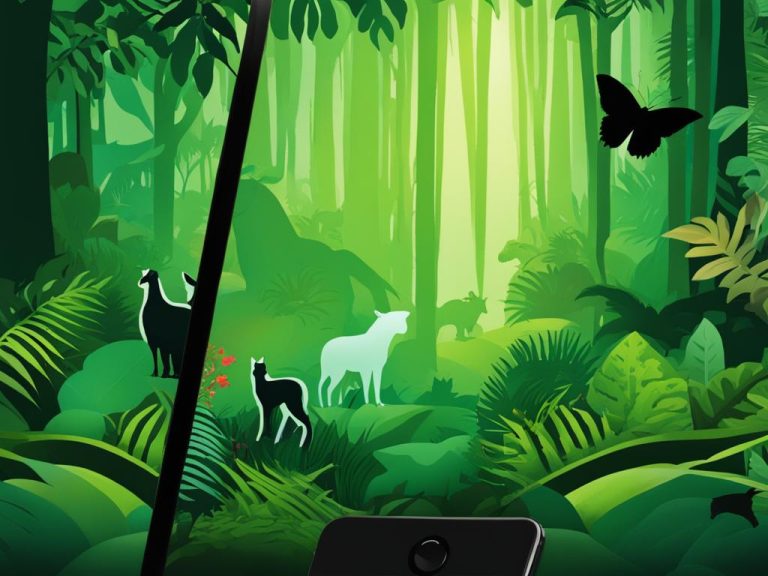As digital learning tools increasingly permeate classrooms, you may wonder: is Kahoot the best interactive learning platform out there?
While Kahoot has become a popular choice among educators, it’s only one player in a rapidly evolving ecosystem of gamified learning platforms.
From those that excel in remote learning to those that offer unique interactive presentations, the possibilities are diverse and tailored to various learning environments.
This article explores some of the best Kahoot alternatives, each designed to enhance engagement and interactivity in ways that may surprise you.
Are you ready to discover the interactive learning tools that can elevate your educational experience beyond Kahoot?
Let’s dive in!
What is Kahoot?
Kahoot has transformed classroom engagement since its inception in 2013, offering a fun, quiz-based learning environment.
It is a game-based learning platform that allows teachers and students to create, share, and play engaging learning games or trivia quizzes.
The platform is designed to make learning fun and interactive, with features like adding videos, images, and diagrams to questions.
Kahoot games can be played live in a group setting, with questions displayed on a shared screen while players answer on their own devices.
Teachers can also assign Kahoot challenges for students to complete at their own pace, such as for homework or remote learning.
Kahoot improves classroom dynamics by fostering an interactive and engaging learning environment that enhances student participation and motivation.
The platform promotes attention and focus, as students are more likely to be involved when learning is gamified.
Although competition can sometimes induce stress, the overall effect is a positive shift in classroom dynamics, as students are motivated to perform and engage more deeply with the material being taught.
But Why Look for Alternatives to Kahoot?
Kahoot has emerged as a favorite among educators for its gamified learning approach.
However, despite its vibrant and engaging environment, it has some limitations.
The platform primarily focuses on multiple-choice questions, which can restrict the depth of assessment and engagement.
Teachers often require classroom technology solutions that support various question types such as short answer, essay, or true/false. Many other alternatives provide these options, allowing for a richer assessment experience.
In a diverse classroom, the ability to integrate different teaching strategies becomes crucial.
There are several other tools that accommodate various teaching styles and subject matters, enabling educators to create customized lessons that resonate with all learners.
Exploring these alternatives will equip you with the tools to tailor your teaching strategies.
The aim is to foster a deeper understanding among students, promoting not just participation but meaningful learning.
Best Kahoot Alternatives
1. Quizizz
Quizizz is an interactive, gamified learning platform designed for educators to create and administer quizzes that assess student learning in an engaging way.
Teachers can use Quizizz for live classroom quizzes or assign them for self-paced completion outside of class.
The platform includes a library of pre-made quizzes, detailed analytics for tracking student performance, and features such as leaderboards and instant feedback to enhance the learning experience.
Quizizz offers several advantages over Kahoot, making it a preferred choice for many educators. Here are the some of them:
- Self-Paced Learning: Quizizz allows students to complete quizzes at their own pace, which can lead to better understanding and retention of material. This is particularly beneficial for students who may need more time to grasp concepts, as they can review questions and seek help as needed.
- Real-Time Feedback: While both platforms provide real-time analytics, Quizizz offers immediate feedback on student responses, helping teachers identify areas where students are struggling during the quiz.
- Diverse Question Types: Quizizz supports multiple question formats beyond just multiple-choice, including fill-in-the-blank and true/false questions. The variety can enhance the assessment process and cater to different learning styles.
- Customization Options: Teachers can easily create and customize quizzes, import questions from a public database, and modify existing quizzes to fit their classroom needs. This allows for tailored assessments that can better align with curriculum goals.
- Integration with Educational Tools: Quizizz integrates seamlessly with various learning management systems (LMS) and platforms like Google Classroom, making it easier for teachers to manage their classes and distribute quizzes.
- Pricing Structure: Quizizz offers a robust free version with essential features, while Kahoot’s pricing can become costly, especially for premium features. Quizizz’s premium options are also generally more affordable, making it a better choice for budget-conscious educators.
Additionally, Quizizz incorporates gamified elements, such as leaderboards and awards, which can motivate students while maintaining a focus on learning.
The balance of fun and educational rigor is often cited as a significant advantage over Kahoot’s more competitive and fast-paced environment.
2. Quizlet
Quizlet is a versatile online learning platform and mobile application designed to enhance student learning through various study tools, primarily flashcards and interactive quizzes.
Users can create their own study sets or access a vast library of pre-made sets, allowing for customization and adaptability to individual learning needs.
Although Quizlet and Kahoot are both popular educational platforms, they serve different learning styles. Here are some points of differences:
- Purpose: While Quizlet is primarily focused on individual study and active learning, Kahoot emphasizes game-based learning and classroom engagement.
- Learning Modes: Quizlet offers a variety of study modes like flashcards, practice tests, and interactive diagrams. In contrast, Kahoot creates interactive quizzes and games played in real time.
- User Experience: Quizlet allows users to create personalized study materials and track progress. Kahoot fosters competition and collaboration among students in a game-like setting.
- Suitability: Quizlet is well-suited for self-paced learning, vocabulary building, and exam preparation. On the other hand, Kahoot is designed for review sessions, formative assessments, and making learning fun
- Pricing: While Quizlet offers a free plan with premium features available through a subscription, Kahoot offers multiple pricing tiers based on user needs.
Quizlet supports collaborative learning through its “Live” mode, where students can work together in real-time during classroom activities.
It also features multiple study modes, including “Learn,” “Spell,” “Test,” and engaging games like “Gravity” and “Match,” which cater to different learning styles and promote active engagement.
3. ClassPoint.io
ClassPoint is an innovative educational tool designed to enhance student engagement directly within Microsoft PowerPoint.
It allows educators to create interactive quizzes, gamify learning experiences, and utilize various presentation tools without the need to switch between applications.
The key features include real-time quizzes, AI-generated questions, and gamification elements like leaderboards and badges, which help motivate students.
Here is a comparison of the two platforms:
- Integration and Ease of Use:
- ClassPoint seamlessly integrates with Microsoft PowerPoint, making it ideal for educators already comfortable with PowerPoint.
- Kahoot is web-based, requiring users to switch between the presentation and the Kahoot platform.
- Audience Size:
- ClassPoint’s pricing has audience size limits of 25 (Basic), 200 (Pro) and 500 (Premium).
- Kahoot can accommodate up to 400 participants (with Kahoot + Max).
- Question Types:
- ClassPoint offers 5 question types in the Basic plan, expanding to all types in Pro and Premium plans.
- Kahoot has quiz and poll questions, varying by plan.
- Gamification:
- ClassPoint provides basic to advanced gamification features depending on the plan.
- Kahoot enhances gamification with AI, especially in their higher-tier plans.
- AI Features:
- ClassPoint offers AI quiz credits in Pro and Premium plans.
- Kahoot incorporates AI enhancement in Start, Premier, and Max plans
Trusted by millions of educators and students globally, ClassPoint aims to simplify the integration of interactive technology in classrooms, making lessons more dynamic and engaging while providing a seamless user experience within PowerPoint.
4. Gimkit
Another alternative to Kahoot is Gimkit.
Gimkit is an interactive classroom game-show platform designed to enhance student engagement through competitive learning.
Developed by a high school student, it allows students to answer questions on their devices, earning virtual currency that they can use to unlock power-ups and upgrades during gameplay.
Here’s how Gimkit and Kahoot stack up:
- Game Structure: Gimkit allows students to create their own quizzes, fostering creativity and ownership in learning. In contrast, Kahoot focuses on teacher-led quizzes with a wide array of ready-made templates.
- Gameplay Dynamics: Gimkit emphasizes interactive gameplay where students earn in-game currency that can be used for power-ups, while Kahoot primarily operates on a points system based on speed and accuracy, which can create a more competitive environment.
- Ease of Use: Kahoot is recognized for its user-friendly interface, making it easier for teachers to set up and run quizzes. Gimkit, while not overly complex, may require more time for students to learn, especially when creating their own quizzes.
Unlike traditional quiz platforms, Gimkit incorporates a variety of game modes, such as “Humans vs. Zombies” and “The Floor is Lava,” making it versatile for different learning objectives.
Teachers can create custom question sets, assign them for homework, and analyze detailed reports on student performance after each game.
The unique blend of gamification and educational content aims to make learning more dynamic and enjoyable for students.
5. Mentimeter
Mentimeter is an interactive presentation tool designed to enhance audience engagement during presentations, classes, or meetings.
Unlike traditional slide software like PowerPoint, Mentimeter allows users to create real-time interactive experiences by incorporating quizzes, polls, and word clouds into their presentations.
Participants can respond using their smartphones or other devices, making it suitable for both in-person and virtual settings.
The platform offers various slide types, including content slides for explanations and question slides for audience interaction, enabling presenters to tailor their content dynamically.
Let us now explore how Mentimeter compares to Kahoot:
- Question Types:
- Mentimeter offers a variety of question formats, including open-ended questions, word clouds, and multiple-choice polls, allowing for more diverse audience interaction and feedback.
- Kahoot primarily focuses on multiple-choice questions and quizzes, making it more suitable for competitive quiz formats.
- Presentation Style:
- Mentimeter emphasizes visual presentation, enabling users to create engaging slides with various visual elements and real-time audience responses.
- Kahoot is more game-oriented, featuring a leaderboard and timed quizzes that encourage competition among participants.
- Pricing Structure:
- Kahoot offers a free version with unlimited quiz questions, making it accessible for educators and casual users. Premium features are available at a low monthly cost.
- Mentimeter’s pricing has a free tier but limits the number of questions and features available, requiring users to upgrade for full access, which can be pricier for some users though.
- Collaboration Features:
- Kahoot includes a team mode that allows participants to collaborate in groups, enhancing teamwork and interaction.
- Though Mentimeter does not have a dedicated collaboration feature but allows participants to engage through shared devices for group responses.
Additionally, Mentimeter provides features for analyzing audience responses, which can be exported for further insights.
This makes it a valuable tool for educators, marketers, and anyone seeking to foster interactive communication.
6. Baamboozle
Baamboozle is an interactive educational platform that allows teachers to create and play customizable games using question sets, which can include images and GIFs.
Designed primarily for classroom settings, Baamboozle offers a variety of pre-made question sets created by other educators, covering numerous subjects.
Baamboozle has a diverse range of game formats, including quizzes, matching games, and flashcards, which can engage students in various ways.
The platform emphasizes teamwork, encouraging students to collaborate in teams, which fosters a cooperative learning environment.
It is particularly well-suited for younger students, as its varied game formats and interactive elements cater to early elementary grades.
Baamboozle also allows for high levels of customization in game creation, enabling educators to tailor content with multimedia elements.
A significant difference between Baamboozle and Kahoot is that the former does not require each student to have their own device; the game can be projected on a screen, allowing for collective participation.
In contrast, Kahoot typically requires students to use individual devices to participate in quizzes.
While Baamboozle’s free version is sufficient for many classroom activities, Kahoot’s premium features may be necessary for enhanced functionalities, which can be a consideration for budget-conscious educators.
Teachers can easily adapt game sets on Baamboozle or create their own, making it a flexible tool for engaging students in learning through game-based activities.
The platform supports various game formats, enhancing the educational experience by making review and practice enjoyable and interactive.
7. Ahaslides
AhaSlides is a cloud-based interactive presentation tool that transforms traditional presentations into engaging, real-time experiences.
It allows presenters to create polls, quizzes, word clouds, and Q&A sessions, encouraging audience participation and making content more dynamic.
While Kahoot is primarily focused on game-based learning, emphasizing competitive quizzes and polls, AhaSlides provides a wide range of interactive elements, including live polls, quizzes, word clouds, and brainstorming sessions.
This makes it ideal for presentations that require audience engagement beyond just quizzes.
Ahaslides supports a generous free plan with many features and offers affordable paid plans. It integrates seamlessly with PowerPoint and Google Slides, allowing users to create customized presentations easily.
It also supports larger audiences, accommodating up to 10,000 participants.
With AhaSlides, users can easily gauge audience reactions, gather instant feedback, and foster a collaborative environment, making it ideal for educational sessions, corporate meetings, and live events.
Its intuitive interface and seamless integration with popular presentation software make it a versatile tool for both in-person and virtual interactions.
8. Rolljak
Rolljak is a collaborative learning platform designed to enhance engagement and creativity in educational and corporate settings.
It allows participants to contribute to problem-solving and brainstorming activities through a gamified experience, making learning and collaboration more interactive and enjoyable.
Rolljak offers a variety of templates and tools to facilitate activities like quizzes, idea sharing, and team challenges, which can be used in classrooms, workshops, or team meetings.
The platform supports real-time collaboration, enabling users to create, share, and refine ideas collectively, thus fostering a dynamic and inclusive environment for learning and innovation.
Rolljak and Kahoot cater to different aspects of interactive learning and collaboration. Here are some instances:
- Focus and Use Cases:
- Kahoot is primarily focused on creating quizzes and interactive assessments. It’s widely used in classrooms and training sessions for gamified learning through multiple-choice questions, fostering competition and reinforcing knowledge through fun and engaging quizzes.
- Rolljak, on the other hand, emphasizes collaborative learning and creativity. It goes beyond quizzes by offering a variety of templates and tools for activities like brainstorming, problem-solving, and team challenges, encouraging participants to generate and refine ideas together.
- Collaboration:
-
- Kahoot is more quiz-centric and often used for individual or team competition. The platform doesn’t inherently focus on collaborative idea generation or group work.
- Rolljak is built around collaboration. It’s designed to facilitate group activities where participants can contribute ideas, build on each other’s input, and work together in a creative process.
-
- Gamification:
- Kahoot uses gamification primarily through competitive elements like points, leaderboards, and timed questions, which can drive engagement through competition.
- Rolljak also incorporates gamification but focuses more on the collaborative aspect, making it a tool for both gamified learning and group creativity rather than just competition.
- Target Audience:
- Kahoot is highly popular in K-12 education and is also used in corporate training for its ease of use in creating quick and engaging quizzes.
- Rolljak appeals to educators and professionals who seek a platform that supports not just engagement but also collaboration and creative thinking.
While Kahoot excels in gamified quizzes and competitive learning, Rolljak is more versatile for collaborative and creative activities, making it a better fit for group projects, brainstorming sessions, and interactive workshops.
There you have it, some of the best Kahoot alternatives.
From Quizizz to AhaSlides, there’s a perfect tool to ignite curiosity and boost engagement.
Imagine turning your class into a game show, a brainstorming session, or a collaborative project space.
With the right platform, you can create an unforgettable learning experience that goes beyond textbooks and lectures.

